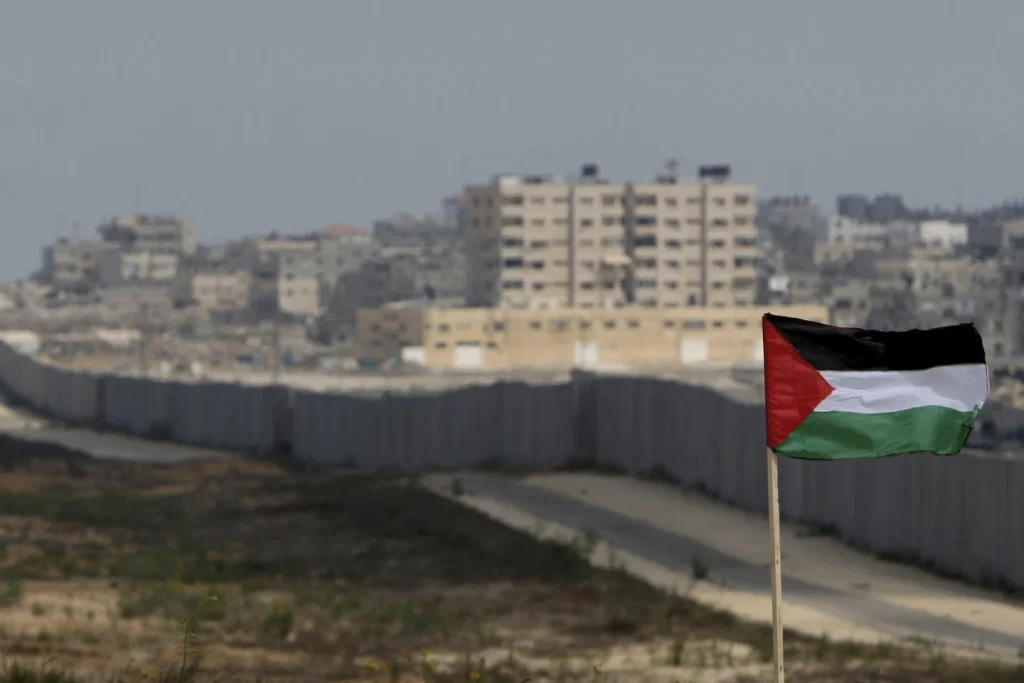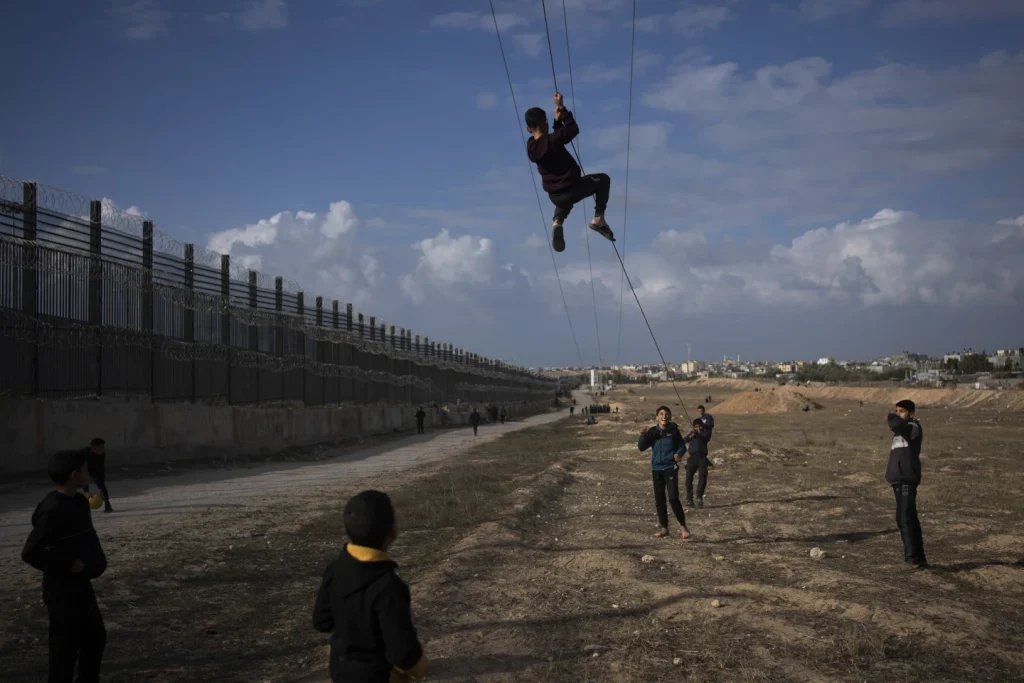The ongoing conflict between Israel and Hamas, which has persisted for nearly ten months, has escalated to unprecedented levels of violence and human suffering.
Central to the complexity of ceasefire negotiations is Israel’s insistence on maintaining control over two strategic corridors within the Gaza Strip: the Philadelphi corridor along the Gaza-Egypt border and the Netzarim corridor, which separates northern Gaza from its southern regions.
As these demands come into sharper focus, the specter of prolonged military engagement looms large, threatening not only the delicate negotiations aimed at securing a cessation of hostilities but also the broader geopolitical landscape of the region.
The Philadelphi corridor, a narrow strip measuring about 100 meters in certain areas and extending 14 kilometers along the border, has been a focal point in Israel’s military strategy.
Israel alleges that Hamas has utilized a network of tunnels beneath this border to smuggle arms, thereby bolstering its military capacity and posing a direct threat to Israeli security.
The Rafah Crossing, located within this corridor, has historically served as Gaza’s primary conduit to the outside world that is not controlled by Israel.
Since the onset of heightened conflict in the region, Israel has taken steps to secure this corridor, contending that it is essential to anticipate and intercept any potential influx of weapons and militants.
Contrastingly, Egypt, a pivotal mediator in the negotiations, maintains a different narrative. The Egyptian government has emphatically denied allegations regarding ongoing tunneling activities and underscores its prior efforts to eliminate smuggling routes along its border.
Such disparities in perception underscore the broader geopolitical tensions in play, particularly given Egypt’s historical treaty with Israel and its commitment to regional stability.
This opposition to Israeli control reflects a mutual concern regarding sovereignty and the intricate dynamics of border security.
The Netzarim corridor, extending approximately 6 kilometers, further complicates the geopolitical landscape. By severing northern Gaza from southern territories, Israel’s proposed control risks exacerbating already strained humanitarian conditions.
Hamas argues vehemently against this arrangement, asserting that a sustained Israeli military presence in these regions would equate to an enduring occupation— a contention that resonates deeply with the Palestinian populace, who have experienced decades of military oversight and restrictions.
The larger geopolitical implications of these corridors are manifold. Should Israel establish military control over the Philadelphi and Netzarim corridors, it would necessitate the implementation of extensive security measures including the erection of checkpoints, fences, and surveillance towers.
For Palestinians, such measures are not merely security precautions but rather manifestations of a deep-seated military dominion that undermines their civil liberties and dignity.
The historical context of Israel’s military checkpoints in the West Bank informs current perceptions; they are seen as instruments of oppression rather than avenues for security.
The specter of renewed Jewish settlements in these corridors, as hinted by some members of Netanyahu’s government, adds a further layer of anxiety among Palestinians and underscores fears of a long-term occupation.
The reaction of Hamas to Israel’s recent demands has underlined a fundamental reality: any assertion of control is viewed as a direct challenge to Palestinian sovereignty.
The organization’s leadership has vociferously championed the idea of complete Israeli withdrawal as a prerequisite for any ceasefire arrangement.
The introduction of new demands by Israel, framed as “clarifications,” raises questions about Israel’s commitment to reaching a negotiated settlement, which many perceive as a tactical maneuver to prolong hostilities under the guise of security imperatives.
Moreover, the dynamics at play within the broader Arab world, particularly Egypt’s involvement, cannot be overlooked.
The Egyptian leadership views Israeli military activity along its border with considerable apprehension, given the historical significance of the 1979 peace treaty between Egypt and Israel.
The potential for renewed Israeli military oversight could threaten this landmark agreement, destabilizing decades of diplomatic efforts and regional cooperation.
As Secretary of State Antony Blinken navigates the intricacies of these negotiations, the extent to which U.S. backing aligns with Israel’s demands remains uncertain.
The outcome of these talks is critical not only for the immediate cessation of violence but also for the future stability of the region.
Should Israel successfully assert its control over the proposed corridors, it may signal a new era of escalated confrontations, both between Israel and Hamas and across the broader Middle East, where the reemergence of military occupation could ignite further resistance and strife.
The intricate geopolitical landscape surrounding the ongoing conflict between Israel and Hamas has been further complicated by the recent discourse surrounding cease-fire propositions, particularly in light of the United Nations Security Council’s resolutions and statements from various international actors.
Notably, both the speech and the aforementioned resolution conspicuously omitted any mention of Israel’s demands concerning the creation and regulation of humanitarian corridors — demands that have only recently been made public and are pivotal to the negotiations.
The demands for a comprehensive withdrawal of Israeli forces, as emphasized in the ongoing discussions facilitated by the United States, Qatar, and Egypt, underscore the complexities inherent in the ceaseless efforts to broker peace in a region marked by protracted violence.
The initial drafts of the cease-fire proposal suggest a phased plan wherein Israeli forces would retreat from populated urban zones to facilitate the release of hostages and enable the return of displaced Palestinian residents to the northern regions of Gaza.
However, the stipulated conditions also introduce significant challenges, such as the ambiguous nature of the proposed mechanisms for ensuring that returning residents are unarmed, a stipulation that, although present, lacks concrete enforcement strategies.
The recent communications between Israeli and Egyptian officials concerning the Philadelphi corridor, although promising in intent, yielded no significant breakthroughs, reflecting the deep-seated mistrust and divergent objectives that continue to pervade the negotiations.
Should these talks ultimately fail, the ramifications would be dire, prolonging a conflict that has already led to the deaths of over 40,000 Palestinians and the displacement of the majority of Gaza’s 2.3 million inhabitants.

The precarious situation is further exacerbated by the ongoing captivity of approximately 110 hostages held by Palestinian militants, coupled with the ever-present threat of retaliatory strikes from Iranian or Hezbollah forces, spurred by the assassination of key militant leaders.
The potential for an escalated conflict looms large as Israel remains steadfast in its assurance to respond decisively to any aggression, while the United States has strategically deployed military assets to the region, thereby heightening the specter of a more extensive and devastating confrontation should peace efforts falter.
In conclusion, Israel’s insistence on control over the Philadelphi and Netzarim corridors stands as a critical juncture in the ongoing conflict with Hamas.
The implications of such a demand resonate across geopolitical lines, impacting regional stability and the prospects for peace.
The negotiations are decidedly fragile, with the potential for a ceasefire hanging in the balance. The international community, particularly key mediators such as the United States and Egypt, must tread carefully, balancing security concerns with the imperatives of sovereignty and humanitarian needs.
Only through thoughtful and equitable negotiations can a pathway to lasting peace be forged, one that respects the rights and aspirations of all parties involved.
